 |
 |
 |
| |
HCV Reinfection Rate Almost 4% in Global Analysis of People With HIV
|
| |
| |
IAS 2021, 11th IAS Conference on HIV Science, July 18-21, 2021
Mark Mascolini
Among people infected with HIV, HCV reinfection after cure occurred at a rate of 3.85 per 100 person-years in a 37-study global meta-analysis involving 13,000 person-years of follow-up [1]. That rate means almost 4 of every 100 HIV-positive people cured of HCV infection every year pick up a new infection.
Researchers from the Sydney's Kirby Institute noted that current analyses of HCV reinfection in people with HIV involve few participants in heterogeneous populations with low reinfection rates. To get a broader perspective on HCV reinfection in people with HIV, they searched 5 big medical databases, reference lists of relevant articles, presentations at key HIV and hepatitis meetings, and review articles. They pooled reinfection rates with meta-analysis using fixed-effect or random-effect methods. And they used the I-square statistic to estimate the percentage of total variation across studies due to heterogeneity rather than chance. An I(2) of 0 means no heterogeneity, and increasing values indicate increasing heterogeneity [2].
The Kirby team amassed 37 studies involving 13,009 person-years of follow-up. Meta-analysis yielded reinfection rates for 6 groups including men who have sex with men (MSM) and injection drug users (IDU) at the following rates per 100 person-years (p-y) and 95% confidence intervals, plus I(2) for heterogeneity.
- All participants, 37 studies, 13,009 p-y: 3.85 per 100 p-y (2.82 to 5.27), I(2) 86.3%
- MSM, 17 studies, 4757 p-y: 5.89 per 100 p-y (4.41 to 7.87), I(2) 75.5%
- MSM-never IDU: 10 studies, 1927 p-y: 4.75 per 100 p-y (3.17 to 7.11), I(2) 68.2%
- MSM-ever IDU: 7 studies, 793 p-y: 4.13 per 100 p-y (2.21 to 7.69), I(2) 58.5%
- Ever IDU: 19 studies, 5511 p-y: 3.29 per 100 p-y (2.01 to 5.39), I(2) 83.9%
- Recent IDU: 4 studies, 402 p-y: 5.49 per 100 p-y (2.08 to 14.48), I(2) 72.1%
Meta-regression analysis determined that, compared with groups with fewer than 85% MSM, those with more MSM had a 2.5-fold higher reinfection rate (adjusted rate ratio 2.56, 95% confidence interval 1.19 to 5.49, P = 0.018). Compared with people cured of chronic HCV infection, those cured of recent HCV infection had a 2.2-fold higher reinfection rate (adjusted rate ratio 2.24, 95% confidence interval 1.04 to 4.80, P = 0.039). Every additional month of follow-up cut the reinfection rate 3% (adjusted rate ratio 0.97, 95% confidence interval 0.94 to 1.00, P = 0.049). Factors that did not affect reinfection rate in this analysis were type of study (clinical trial versus observational), HCV treatment (direct-acting antivirals versus interferon-based), and size of the IDU population.
The Kirby Institute collaborators believe their findings emphasize the need for (1) "continuous education and harm reduction services" to cut reinfection risk, especially in MSM with HIV, and (2) ongoing postcure HCV assessment to spot and treat reinfection early, especially in people with recent HCV infection.
References
1. Hosseini-Hooshyar S, Martinello M, Hajarizadeh B, et al. Hepatitis C reinfection risk following successful therapy among people living with HIV: a global systematic review, meta-analysis, and meta-regression. IAS 2021, 11th Conference on HIV Science, July 18-21, 2021. Abstract PEB089.
2. Higgins JPT, Thompson SG, Deeks JJ, Altman DG. Measuring inconsistency in meta-analyses. BMJ. 2003;327:557-560. doi: 10.1136/bmj.327.7414.557. https://www.ncbi.nlm.nih.gov/pmc/articles/PMC192859/
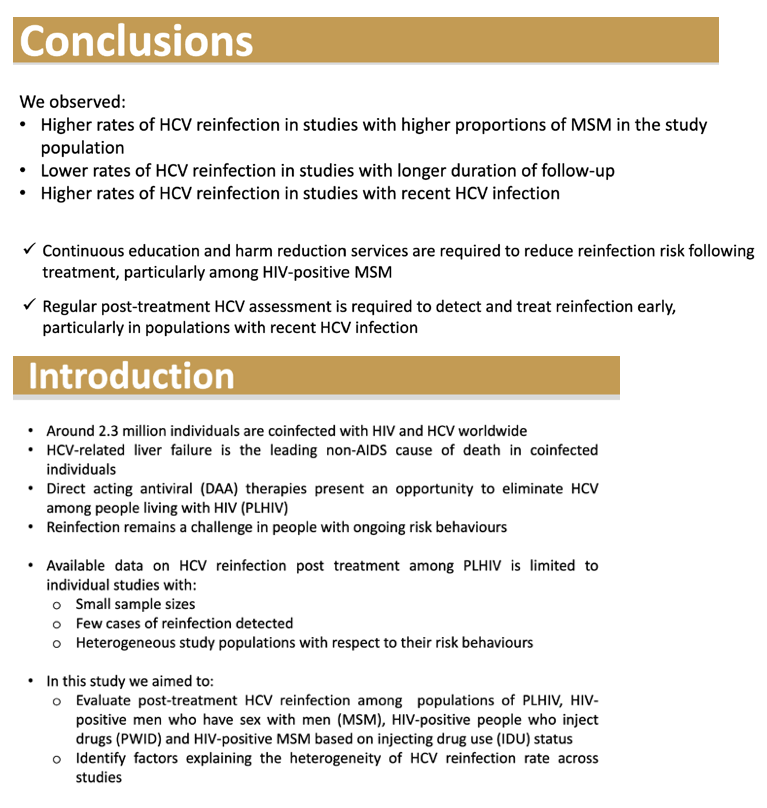
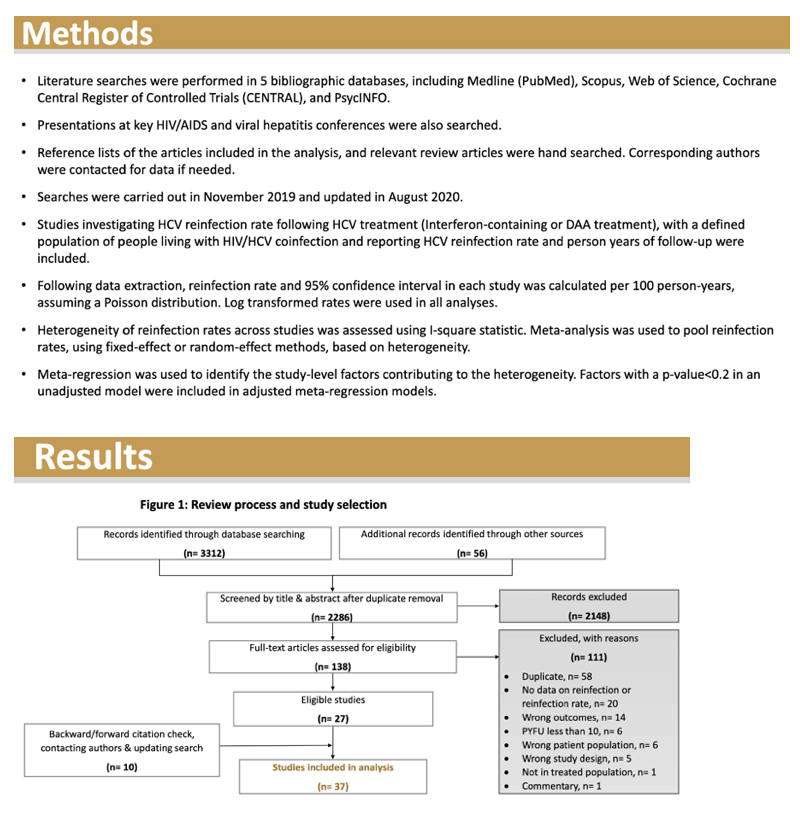
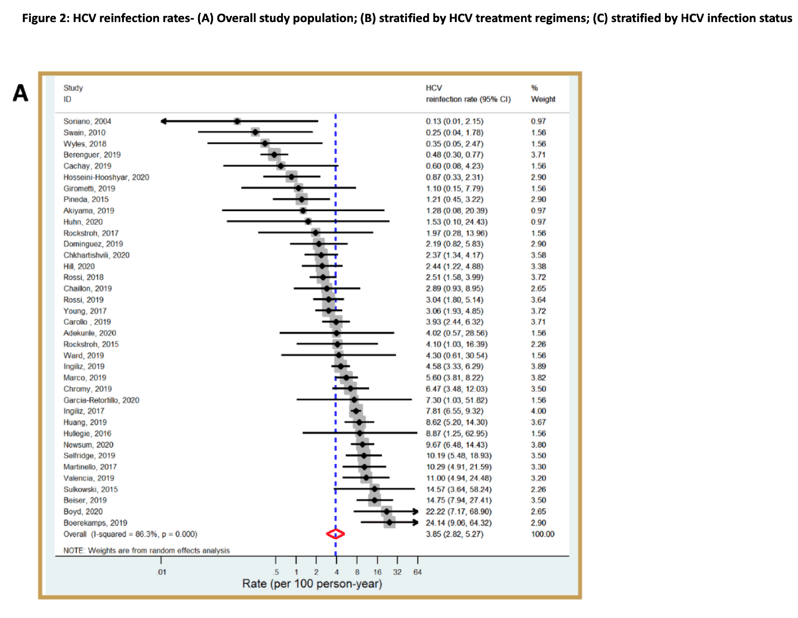
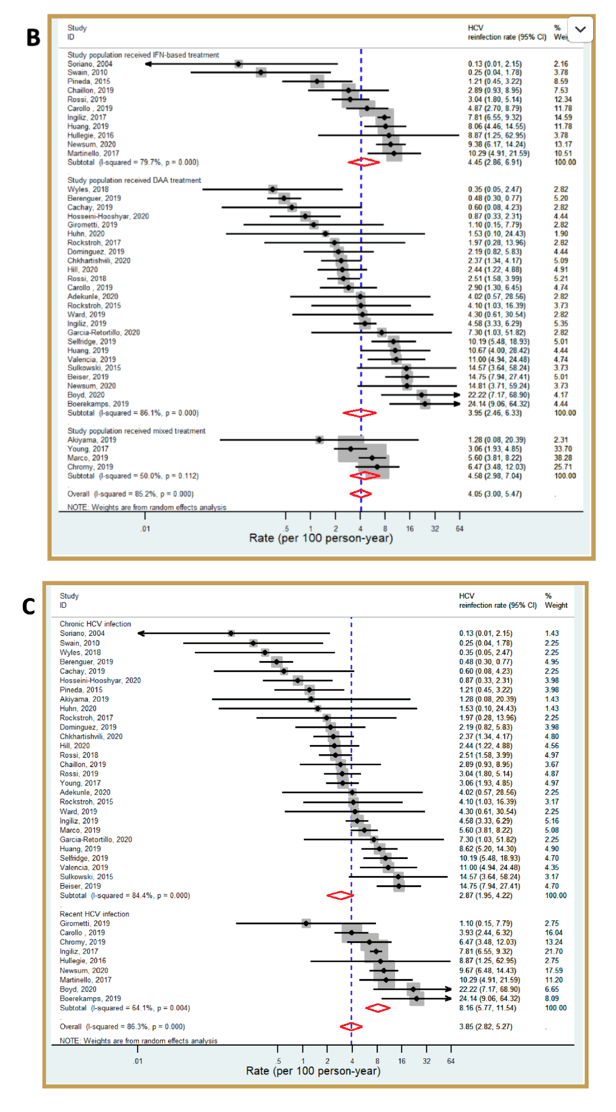
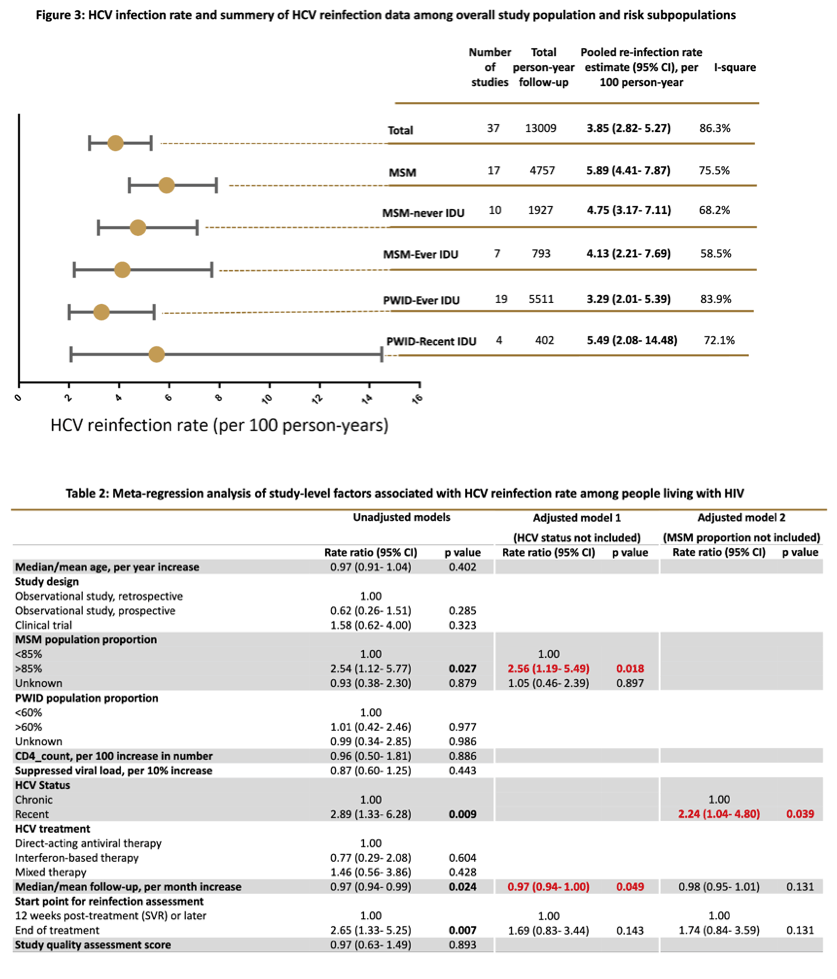
|
| |
|
 |
 |
|
|